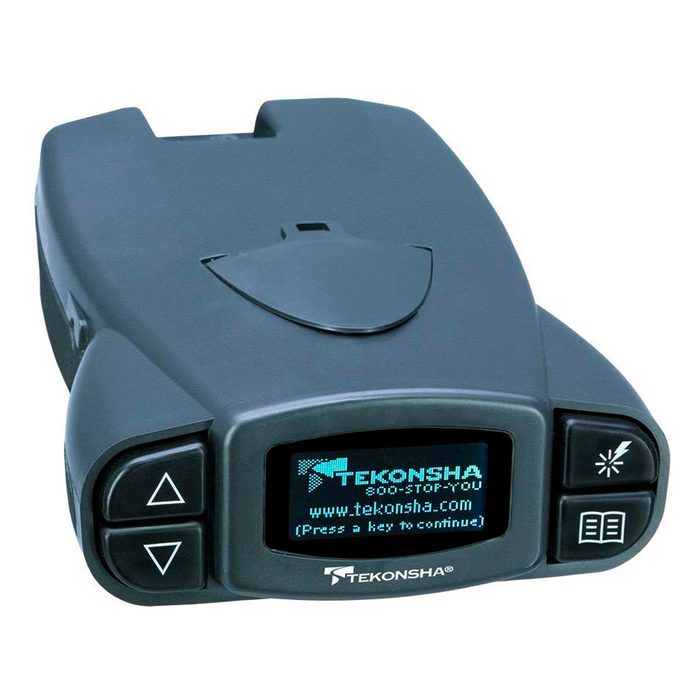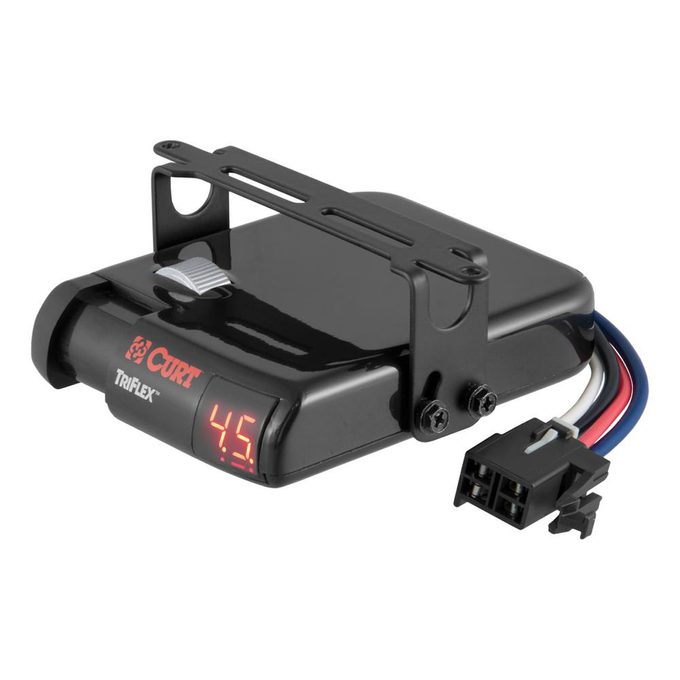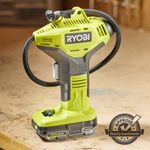How to Choose a Trailer Brake Controller

Learn the options available for trailer brake controllers, how break controllers work and how to know which brake controller is best for your needs.
Our editors and experts handpick every product we feature. We may earn a commission from your purchases.
Despite the fact that you purchased a vehicle with a factory-installed towing package, you now learn that the vehicle still needs a brake controller unit to operate the brakes on your trailer. How do you determine the best one to install?
What is a Trailer Brake Controller?
Trailer brake controllers send power to a trailer’s braking system when a driver applies the brakes in a tow vehicle. The dawn of anti-lock braking systems (ABS) permanently changed the nature of these devices. Once integrated with the hydraulic lines in the tow vehicle’s brake system, brake controllers in the ABS era now interface with that brake system electronically.
Learn how to repack trailer wheel bearings yourself.
Do I Even Need a Trailer Brake Controller?
Lightweight trailers often do not need independent braking systems. However, availability is growing because of increased safety standards and awareness. Boat trailers often employ surge brakes, which do not require a controller. Furthermore, the big three automakers now include the controller in some of their factory-installed towing packages, so pay attention to how your vehicle is equipped. If you do not need one, take a pass on the expense.
Here’s what you should know about how to pick a tow hitch.
Types of Trailer Brake Controllers
Depending on how you classify them, as many as four types of control modules exist. Trailer brake controllers range in price from $45 to a few hundred dollars. If you tow frequently or over long distances, the investment in your controller becomes worth every penny.
If your trailer lights aren’t working, check out these 9 easy fixes.
Time-Delayed Brake Controllers
Time-delayed brake controllers are the least expensive and work by activating the trailer brakes with a prescribed amount of power for a discrete amount of time. The operator sets the onset delay, power level and length of braking application to match the demands of a load, the frequency a vehicle is used for towing, and the driving style of the operator. The controller can be installed at any angle (you’ll see why this is important later). For someone who only tows occasionally, tows short distances and/or tows medium to lightweight loads, this controller can work very well.
Its principal drawback relates to the lack of variability in braking power. In light braking, the trailer brakes may come on too strong compared to that of the tow vehicle. This causes the trailer brakes to carry the weight of slowing both the vehicle and the trailer, wearing the trailer brakes prematurely. Conversely, stronger braking situations force the tow vehicle to compensate for the limited power supplied to the trailer brakes. This situation causes undue wear on (and heating of) the tow vehicle’s brakes, and in an extreme situation can cause a heavier trailer to jackknife.
These DIY utility trailer upgrades make your trailer work better.
Inertia-Based Brake Controllers
A subset classified as inertia-based controllers adjusts braking power to the trailer as it senses a change in the position of a pendulum. The more aggressively a vehicle slows, the more pendulum movement it causes and power to the trailer brakes increases. The need for level installation and the fact that it can be fooled by steep inclines represent drawbacks to this style of controller.
Proportional Controller
A proportional controller (shown here) use accelerometers to sense braking intensity and deliver a proportional level of power to the trailer brakes. This response keeps the tow vehicle and trailer working together in light, heavy or sudden braking situations, distributing the stress evenly for smooth and responsive operation. Although they are a superior device, a more involved installation and steeper price may not warrant use in your vehicle if you don’t tow often. Current pricing trends make proportional controllers more affordable now than they had been in the past.
Hydraulic-Over-Electronic Controller
Recent innovations have produced the hydraulic-over-electronic controller. This device transfers hydraulic line pressure into electric current using mini computers. As the next generation, they are now the most versatile controller on the market, but generally equate “new” with “expensive”—at least until they become more commonplace.
Receiver hitch stuck? Here’s how to get it out!
Trailer Brake Controller Installation Considerations
Most home mechanics can install a trailer brake controller without much hassle. Late-model vehicles often include a seven-point harness for controller installation, but other styles exist. If you need to buy the controller side of the harness, they are readily available at auto parts stores and online. A factory prewired plug may be hidden under your dash. Look for it tucked away just above your right knee when you sit in the driver’s seat. Occasionally, you’ll find it on the left side. If the manufacturer did not prewire a run back to the trailer brake harness, you will need to install one in a single, uninterrupted length of wire. Remember, inertia-activated and some proportional controllers must sit relatively level for proper operation. You should also check clearance above your knees to prevent jostling the device while driving.
If you tow in high-demand situations because of grade, distance or frequency, also consider upgrading your rotors to a slotted and cross-drilled style and your pads and brake fluid to high-temperature products.
Stay out of danger with these winter driving tips.
Check out how to hook up a trailer safely in the video below.




